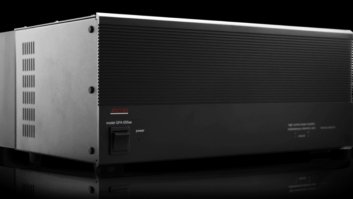LAS VEGAS – The mature North American smartphone market will get a fourth-quarter lift from the expected launch of new iPhones, a surge in U.S. carrier competition, and a growing number of U.S. consumers opting for early upgrade programs, analysts said.
Despite the expected fourth-quarter updraft, 2014’s percentage gains in smartphone unit shipments will slip from 2013, as will tablet percentage growth, some analysts said.
Slower growth, however, isn’t discouraging vendors from launching new smartphones, which will be on display here during CTIA’s Super Mobility Week. Most were announced in the weeks preceding the show but will appear in carrier and vendor booths and at vendors’ off-site meeting rooms.
The product will enter a North American market forecast by IDC to grow 9.8 percent in unit shipments in 2014 to 160.6 million, down from 2013’s 12.5 percent and 2012’s 14.7 percent gains. Frost and Sullivan forecasts 18.3 percent smartphone growth in North America in 2014, down from 2013’s 29 percent.
North American tablet sales are also growing more slowly, with IDC forecasting 2014 tablet shipment growth of 4.2 percent to 61.6 million, down from 2013’s 11.9 percent and 2012’s 22.4 percent. The IDC statistics include two-in-one hybrid tablets/laptops.
NPD DisplaySearch forecasts 7 percent tablet growth in 2014 to 74.3 million units, down from 2013’s 33 percent gain. Growth will pick up some in 2015 with an 11 percent gain, NPD said.
At least in the smartphone market, fourth-quarter activity will pick up from earlier in the year, said Stephen Baker, NPD’s industry analysis VP. “We expect to see a big last quarter of the year,” he said. “Assuming all the iPhone rumors are true, we think those will be a significant driver of increased traffic and greater customer interest in the segment, despite the relatively high levels of penetration. This will likely be the first iPhone product in the last couple of years with significant hardware upgrades and changes.”
The increased level of competition among the carriers, he added, “is a classic driver of increased traffic and purchasing.” Most consumers, he noted, “have not yet had a chance to take advantage of the tradeup and installment plans now being offered. As the contracts get looser and the markets more fluid, that ought to make the smartphone business even more fluid over the coming years.”
Tablet sales growth is falling, he continued, “because “tablet market penetration is high, usage is being challenged, and the market is shifting.” More competition is coming from entry-level “Bing books” at under $250, Chromebooks and the two-in-one segment, and “the slow encroachment of phablets,” he said. Price competition is “severe” at all price levels, he said.
In these mature markets, dealers will find the following in Las Vegas.
HTC: The HTC One M8 for Windows is the first Windows version of the company’s flagship One Android smartphone.
The Windows Phone 8.1 version is available through Verizon Wireless stores and Microsoft stores at $149 with two-year contract. It’s also sold unsubsidized without contract.
HTC also plans what it calls its lowest-priced 4G LTE smartphone to date. The Desire 510 will be available at an unspecified time in Europe and Asia as well as through select carriers in the U.S.
The 510 will join two other Desire phones, both with LTE.
The new model features 4.7-inch FWVGA touchscreen, Android 4.4, quad-core 1.2GHz processor, 1GB RAM, 8GB of onboard memory and 128GB MicroSD card slot.
Infosonics: The company is off-site demonstrating its first LTE smartphone, the Verykool SL5000W, an Android 4.4 phone with 1.2GHz quad-core processor, 5-inch 480 by 854 IPS display, multiband HSPA+42Mbps, multiband LTE, 1GB RAM, 4GB memory, 64BG MicroSD slot, FM radio and 720p video capture. It retails for $208 unlocked.
LG: A pen-enabled variant of LG’s flagship G3 smartphone is the G3 Stylus, which features a large 5.5-inch display and many of the user-interface features of the G3. It lacks LTE to deliver what LG called a “fairly priced package.”
The Android 4.2.2 phone is targeted to consumers who don’t want to be bogged down carrying a laptop, tablet and smartphone at one time, the company said.
The new phone’s proprietary Rubberdium stylus can be used to jot down notes and sketches.
LG will roll out the G3 Stylus in 3G markets outside the U.S. this month. Plans for U.S. sales haven’t been announced.
The G3 Stylus features 5.5-inch display but with quarter- HD resolution instead of the G3’s quad-HD display.
Plum Mobile: The handset brand popular in Latin America, the Caribbean and many Asia and Pacific countries is launching unlocked Android smartphones in the U.S., including LTE phones.
Samsung: The company’s newest products include the latest generation of Galaxy Note phablets and a wireless virtual-reality headset optimized for use with the Galaxy Note 4.
The Galaxy Note 4 phablet will be available in the U.S. beginning in October, and the Galaxy Note Edge phablet will be available later this fall. Both models will be available through AT&T, Sprint, T-Mobile and Verizon. U.S. Cellular will also offer the Note 4.
The two LTE-equipped phablets add UltraHD playback and recording and Quad HD display compared with their predecessors. Both also feature 192kHz/24- bit FLAC high-resolution audio playback.
Both are equipped with Samsung’s S Pen, and both models let users view multiple apps at a time.
The Note 4 features 5.7-inch display like the Note 3, but the Super AMOLED display has been upped to Quad HD 2,560 by 1,440 resolution from FullHD. The processor also goes to octa-core processing in select countries from 2.3GHz quad-core. One Note 4 version will be available with 1.7 GHz quad-core processor, but the phablet will also be available with 1.9GHz octa-core processor (1.9GHz quad plus 1.3GHz quad).
The Note 4’s fingerprint scanner is also said to be improved.
Like its predecessor, the Note 4 features 3GB of RAM and 192kHz/24- bit high-resolution audio playback. Embedded memory of 32GB can be supplemented by a 64GB MicroSD slot.
The Note 4’s little buddy, the Galaxy Edge, features a curved-edge screen on one side to provide quick access to frequently used apps, alerts and device functionality with a thumb swipe even when a cover is closed.
The 5.6-inch Super AMOLED display goes to Quad HD from 720p OLED. RAM goes to 3GB from 2GB. Embedded memory is 32GB or 64GB depending on the version.
For its Samsung Gear VR Innovator Edition virtualreality headset, developed with Oculus. Pricing wasn’t disclosed.
The headset features Quad HD 5.7-inch 1440p AMOLED display and will be available through various U.S. carriers and retail channels in the fall.
Connected to the Galaxy Note 4, the headset will deliver full 360-degree 3D video from virtual-realityoptimized content, including movies, gaming and educational content.
Sony: The company went to the IFA show with two Z3 smartphones and a Z3 tablet, all offering a PlayStation4 gaming experience. The company doesn’t have an on- or off-site presence at the CTIA show.













